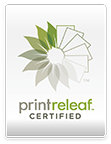
Giving birth is an experience that is unique to every woman, and choosing where you’d like to give birth is a big decision. It’s important to chat to healthcare professionals, starting with your community midwife, to help you make the best informed decision for you and your family.
In 2020, home birth rates began to climb again after a 5 year decline, increasing from 2.1% of births in the UK taking place at home to 2.4%. The Royal College of Midwives reports that the rate is far higher in areas where midwifery continuity teams and community services are better established, for example, Powys has the highest home birth rate of 8.9%.
If you’re considering a home birth, we’ve put together this guide to home births in the UK which should help to answer all your questions.
Where can I give birth?
In the UK there are three locations for options for giving birth:
- In a hospital.
- In a midwife-led birth unit or centre (which may be connected to a hospital).
- At home.
You should be supported in your decision to give birth where you choose, but any complications in your pregnancy or previous pregnancies or births may mean that you are advised in a specific course. In the UK, the NHS can provide midwifery care for home births, or you can choose to use private midwives, just like choosing an NHS or private hospital.
Who can have a home birth?
A home birth is most suitable for women who have a low-risk pregnancy and no complications, however any pregnant woman can consider a home birth. You should discuss your options with your midwife or healthcare provider, who can assess your suitability for a home birth.
What are the pros and cons of a home birth?
There are many reasons that families choose to have a home birth, but the most common is that the mother feels that she may be more relaxed and comfortable in her familiar home environment. The pros and cons of a home birth will of course depend on your specific risk factors, but for a straightforward pregnancy, these are the benefits and risks that you will want to consider:
The benefits of a home birth are:
- A comfortable, familiar space for labour and birth where you do not need to break your focus to travel elsewhere.
- You have more control over your birth, including freedom of movement, a better likelihood of a water birth if you choose to have one and have prepared a birth pool
- You may be more likely to be under the personalised care of a midwife who knows you and your family depending on your location and how the midwifery team in your area works.
- You are less likely to require an intervention such as an assisted birth or episiotomy than if you give birth in a hospital (research from The Lancet).
- You can have as many people as you would like present at your birth, rather than be limited to one or two birth partners.
- If you have other children, you won’t need to leave them with alternative childcare, although you will need to arrange back up childcare in case the plan changes.
The cons that you will need to consider for a home birth are:
- The pain relief options for a home birth are more limited than in a medical environment. This depends on your location, but you will not be able to have an epidural at home.
- There is always the chance that you may need to transfer to hospital during labour or after the birth depending on circumstances that could change throughout the birth such as slow progression of labour, (this is the most common reason, with 32.4% of transfers), postpartum haemorrhage or blood loss, foetal distress or the decision to have an assisted birth.
- Depending on the time and location, your midwife team may not be available to be present for your birth. If this is the case, you will be advised to come into hospital or
You can also always change your mind about your choice of birth location at any point throughout your pregnancy and even labour. Your midwife will support your decision. If in labour, they can organise an ambulance if required to transfer you.
Is a home birth safe?
In a straightforward pregnancy, birth is generally safe in any location. For a second baby, a planned home birth is as safe as having your baby in a hospital or a midwife-led unit. For your first baby, having a home birth slightly increases the risk of problems for the baby from 5 in 1000 for a hospital birth to 9 in 1000 for a home birth.
When you choose to have a home birth, your midwife will carry out a risk assessment check on your house to ensure that it is accessible for them and an ambulance if required among other things. You will be advised to set up a resuscitation space for baby after birth and to pack a hospital bag should you need to transfer to hospital. They will also provide you with a birth box or bag leading up to your birth which will contain items the midwives require at the birth. You can make all other preparations for your baby’s arrival the same as you would for any birth. All of this means you are as prepared as can be for a successful home birth.
Even for the risks mentioned above that you will need to take into consideration to make your informed decision, there are plenty of options that make a home birth a safe choice. Midwives travel with all the same equipment that they would have available to them on a midwife led unit, meaning that if you have heavy blood loss or a haemorrhage, they can provide you with medication to contract your uterus and can perform tummy massages to slow or stem blood flow until you are transferred to hospital. They also carry resuscitation equipment for babies in the rare occasion that it is required.
It’s also worth noting that midwives can perform some procedures such as stitches on tears at home. This can even be done from the comfort of your own bed or sofa!
What happens if the baby is born before arrival (BBA)?
Born before arrival (BBA) is when a mother delivers her baby before a midwife or healthcare professional has arrived. This is sometimes known as an emergency home birth or an unplanned home birth as is generally due to precipitous labour. This is different to a free birth where the family makes the decision to birth without medical professionals.
If your baby is in the process of being born at home or on your way to hospital, you or your birth partner will need to call 999. They will guide you through exactly what to do and will dispatch an ambulance to wherever you are located.
Can cord blood be collected at a home birth?
Yes, cord blood can be collected at a home birth. If you have chosen stem cell storage with Smart Cells, we provide you with the cord blood stem cell collection kit that your assigned phlebotomist will use to collect the sample after birth. They can perform this at a home birth just the same as they would at a hospital birth. The midwife may also provide assistance with the collection process and will ensure that the collection doesn’t interfere with the golden hour that you are experiencing with your baby after their birth. The sample will then be collected by a courier and transported to our laboratory for processing and storage as with any other birth.
If you have any questions about how cord blood collection and stem cell storage will work for you and your family, please do get in touch with our team.
What do I need for a home birth?
In reality, aside from a few extra towels, a hospital bag in case of transfer and something warm for your baby to wear after arrival, there is very little you really need for a home birth. However, there are plenty of things that you may like to have prepared for your home birth:
- Birth pool – some women choose to use water for pain relief during labour and birth. While you can use a bath in labour, you will require a birth pool for the birth itself which you may need to hire privately or from your local hospital, if offered in your area, complete with a liner and birth pool kit, or you may need to buy one yourself.
- Pain relief – paracetamol, TENS machine and hot water bottle are good options.
- Waterproof sheet(s) – this is useful for your bed, sofa or floor, depending on where you choose to give birth and move afterwards.
- Blankets – for you and baby, to keep you warm after birth, especially if you’ve just got out of the water.
- Hat – for baby after birth. It’s important not to let their temperature drop.
- Flannels – these can be used on your forehead to cool you during birth or as cold compresses on your perineum.
- Food and drink – labour is hungry work and can take a long time! Your midwives will advise you to snack throughout and to keep well hydrated. It may also be a good idea to provide snacks and drinks, such as having the kettle ready, for the midwives too.
- Torch/light – you may want low lighting during the birth if you are practising hypnobirthing, so this will allow your midwives to check you if necessary during labour and after the birth. If you require stitches, this will also help the midwives to see better.
- Mirror – some women like to be able to see how baby is doing while crowning, and the midwives may use it too if you’re in a birth pool.
- Music – many families like to choose their own playlist to invigorate or relax them during the different stages of labour and birth.
- Aromatherapy – scented oils can provide relaxation, relief or energy during labour to help women get into the zone.
Overall, a home birth can offer a unique and personalised experience, and can be a safe and viable option for women with a low-risk pregnancy. With the support of a midwife and careful preparation, you can enjoy a positive and memorable birth experience in the comfort of your own home. And with the option to collect and bank your baby’s cord blood, you can also take steps to safeguard your family’s health and wellbeing for the future.



